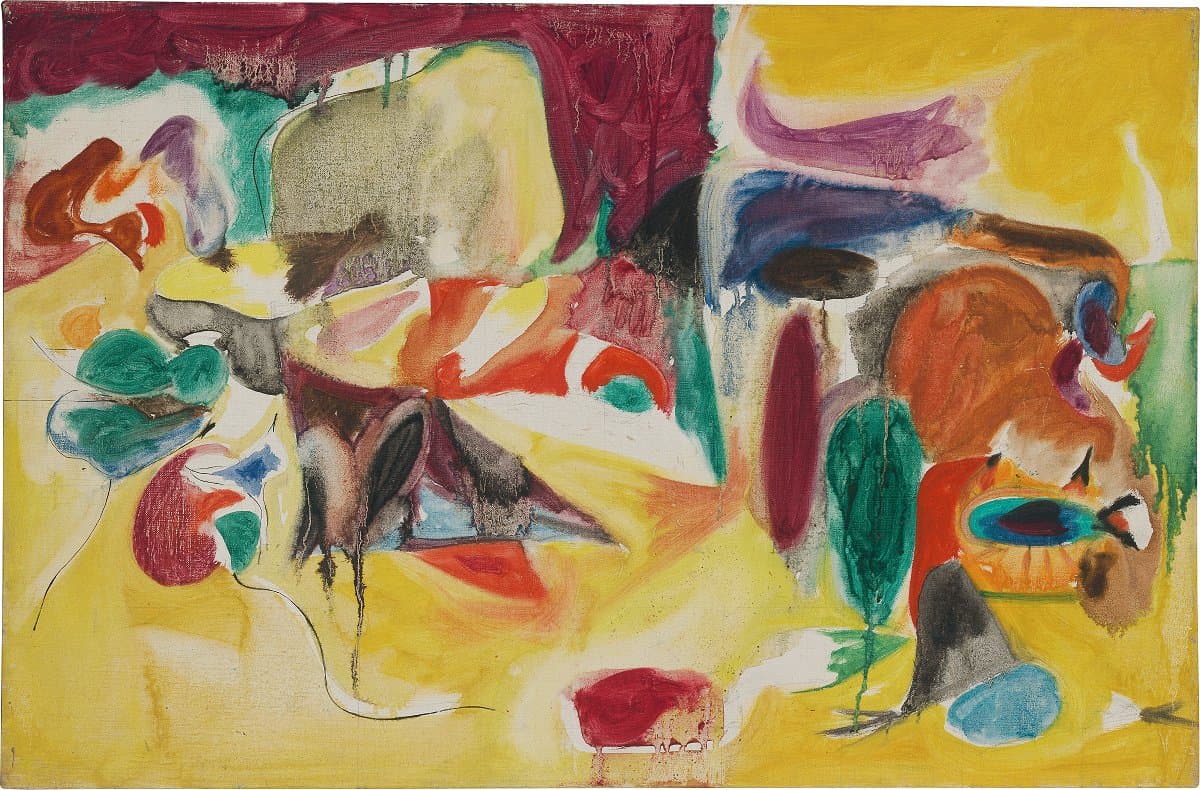

Arshile Gorky
Learn moreUntitled 1944
© Arshile Gorky. ADAGP/Copyright Agency Purchased 1972
More detail | PermalinkUnder the threat of persecution, Arshile Gorky fled Turkish Armenia with other members of his family and arrived in the United States in 1920. After studying at the New School of Design in Boston, he moved to New York and later met John Graham, David Burliuk, Willem de Kooning and Stuart Davis. In 1930 he participated in a group exhibition of young artists at the Museum of Modern Art, New York.
Gorky moved with his wife and children to the home of his parents-in-law at Crooked Run Farm in Hamilton, Virginia in the spring of 1944, where he worked for nine months, producing a large body of drawings that inspired the paintings he made later, in the winter. It is likely that Untitled was painted in November or December of that year, and was based on one of these drawings.
As can also be traced in Mark Rothko’s Untitled watercolour of 1944–46 (see p xx), the influence of European Surrealist painters was being naturalised by the painters of the New York School, including Gorky. Especially influential were paintings by Joan Miró and the Surrealist compositions of Picasso. Gorky’s Untitled owes much to his admiration for Miró, whose works were known in New York from the inaugural exhibition at the Pierre Matisse Gallery in 1931.
Although he employed similarly biomorphic forms, Gorky’s technique is more textural than Miró’s, and much denser in its composition. Untitled, like many of Gorky’s so-called abstract works, remains firmly based on landscape elements—the hills, rocks and trees that make up his observed world—carefully abstracted into their final form. Strong and vigorously worked elements unite with swathes of luminous transparent colour in an interplay of light and dark, warm and cool, and sharp and rounded forms. Despite recurring ambiguities about what are figures and what is ground, the painting strongly hints at a landscape of organic objects in three-dimensional space.
Untitled shows traces of a pencil grid, which indicates that the composition was directly transferred from a drawing. This process was common for Gorky, although it contradicts much of the rhetoric surrounding Surrealism’s automatism. The artist carefully worked out his compositions in advance through drawings, and reused them with different colour schemes and textures; it is clear that the spontaneous influence of the subconscious mind had a limited role in Gorky’s work.
Much knowledge of his technique disappeared after a disastrous fire in 1946 destroyed his studio, thousands of drawings and most of his paintings. Untitled survived because Gorky had already given the painting to André Breton, the spokesman for the Surrealist movement who fled to New York after the Nazi invasion of France. Gorky first met Breton in the winter of 1944, at much the same time that he was working on Untitled. The painting was probably given on the occasion of Gorky’s first exhibition at the Julien Levy Gallery, New York, in March 1945, to which Breton had contributed the catalogue introduction, which was also used as a concluding chapter in the second edition of his book Surrealism and painting.
Michael Lloyd and Michael Desmond[1]
[1] Adapted and updated from Michael Lloyd and Michael Desmond, European and American Paintings and Sculptures 1870–1970 in the Australian National Gallery, Australian National Gallery, Canberra, 1992, pp 214–16, by Christine Dixon.

